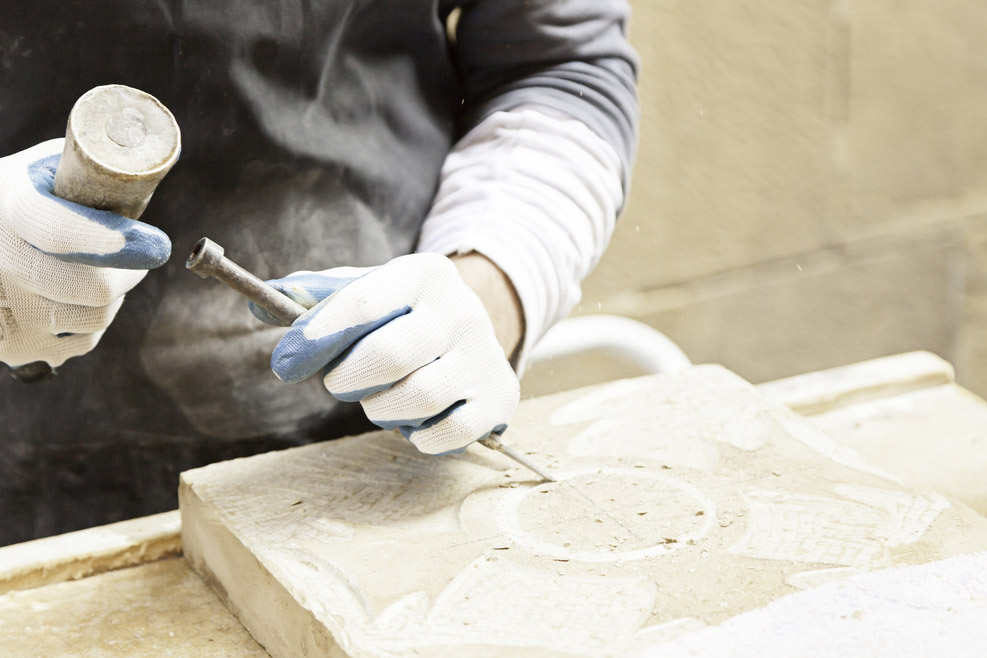For stonemasons, or anyone seriously interested in stonecraft – one of the oldest professions in human history – visiting the Great Pyramid of Giza is not so much a tourist activity as a rite of passage.
Built for the Pharaoh Khufu during the third century BC, the Great Pyramid is the only one of the original Seven Wonders of the Ancient World that is still standing today. Little wonder, really – the pyramid was built with an estimated 2.3 million stone blocks, each one weighing between 2 and 15 tonnes. It’s the epitome of ‘built to last’.
From a distance, the Great Pyramid is a tawny, golden yellow, but it was not always thus. In its heyday, the entire structure was encased in massive slabs of polished white limestone that sparkled and shimmered in the blazing Egyptian sun. (The limestone facades were stripped away long ago, used to construct mosques, fortresses and other buildings.)
It’s when you get up close, however, when you lay your hands on stonework that has remained resolutely in place for more than two millennia, that the real miracle of the Great Pyramid becomes evident. The giant blocks fit together with such precision that many of the joints are virtually invisible; around and around, millions of mighty stones locked together year after year, towering into the sky. How on earth did they do it?

Modern engineers have concluded that the ancient Egyptians built a ramp that spiralled up and around the pyramid, on which the stones (having first been quarried and transported to Giza along the Nile) were dragged up and manoeuvred into place using dolerite ‘ball-bearings’. Once in place, skilled craftsmen would sculpt each block into its final position, chipping and honing the stone until it fitted perfectly.
For complexity, durability, precision-finishing, not to mention sheer scale, the Giza pyramid is perhaps the greatest feat of engineering that humans have ever accomplished. Well worth a visit!
Stone has been used as the primary material in the creation of some of the world’s most famous and long-lasting shelters, temples, monuments, artifacts, castles, fortifications, and even entire cities (the Stone Town part of old Zanzibar in Tanzania is something of a giveaway;
Ireland too is rich with examples of ancient stonemasonry including stone circles, burial chambers, dolmens and forts. Here in Drumleck, we are only 20 minutes up the road from Newgrange, one of the most famous Stone Age monuments anywhere in the world and the crowning glory of Ireland’s Ancient East – more on Newgrange in our next blog.

While stonecraft has never gone out of fashion in matters of interior design and architecture, we are seeing now that it is more in demand than ever. This is hardly surprising, given the timeless, classic beauty of the main element. The combination of ancient craft and contemporary design aesthetic has inspired some of the most striking commissions we have ever made for clients.

These projects include kitchen islands and vanity tops for kitchens, pantries, boot-rooms, utility rooms and other spaces, where the timeless craftsmanship of the stonemason shines through in a contemporary setting. The elegance and beauty of our creations is underpinned by durability, with stone of course one of the toughest and longest-lasting substances on the planet.
We work with a variety of stone including marble, granite, natural quartz and limestone, quarried into raw blocks around the world and processed into slab material. The slabs are then brought to us for finishing, where we collaborate with skilled stonemasons and craftspeople to create unique pieces for the home.

We also blend specialist knowledge of traditional stonecraft with modern production technology and sophisticated machinery to produce the best results: magnificent examples of stonecraft for both inside out outside the home.
For clients who wish to use stone as an integral or significant part of their home development project, there are many considerations – both practical and aesthetic – that will have to be worked through. This is where we come into our own, drawing on years of experience to guide and support clients with strong ideas and big visions.

